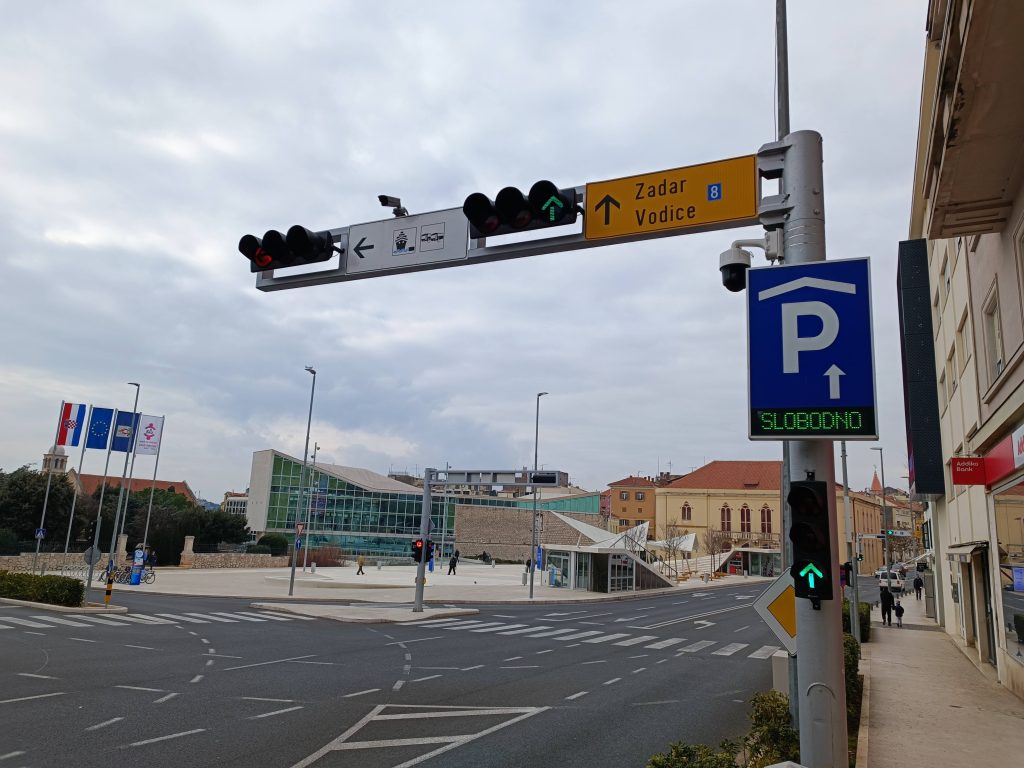October the 18th, 2023 – Šibenik, as previously reported, has installed over 200 cameras, extensive optic cable networks, server rooms, and other infrastructure at a cost of over 2.2 million euros.
The city government stated that these cameras would be utilised by the police for solving crimes, reviewing traffic accidents, assessing property damage, parking violations, and so forth. However, what slipped under the public’s radar was the use of AI for monitoring traffic violations, specifically parking.
Parking in Šibenik has a longstanding tradition of “anything goes.” Sidewalks, pedestrian crossings, bus stops, and intersections have all been fair game. Park wherever you like; the odds of receiving a fine have historically been minimal.
From tow trucks and eagle eyes to cameras and AI
Up until around 2010, the police handled parking violations and operated tow trucks. You couldn’t just park wherever you pleased, there was a much higher chance of getting a ticket. The growing number of cars overwhelmed the police force, prompting them to delegate the responsibility for parking violations to city and county governments. This was not unique to Šibenik; it was a nationwide change. Police intervention was reserved for special circumstances involving illegally parked vehicles.
From December 2020, the city government announced plans to use cameras and AI to identify illegal parking. The system scans predefined zones to detect vehicles parked for more than a minute. A city employee then reviews the AI’s findings and either confirms or discards the suggestion. License plate information is automatically recognized (OCR), and the fine is issued electronically.
The system went live in July of this year. City officials warned the public through various media outlets that illegal parking would no longer be tolerated and reported that the system in it’s testing phase detected 600 to 700 violations per day. Despite these warnings, very few took them seriously and continued to park as they always had.
Huge numbers of fines were issued following installation
Two months after the system’s launch, the first batch of fines was issued, shocking many recipients. Some people received 10 or more tickets for the same violation across many days. According to Dnevnik.hr, over €50,000 in fines has already been collected—a fraction of the total value of the 20,000 issued fines. It’s worth noting that this is only up to the end of September, there are many more fines coming. Deputy Mayor Danijel Mileta lauded the system as a “smashing success” bringing down the violations from 600 a day to less than 200 per day, and also citing significant public support.
However, part of the public is enraged. Social media comments brim with anger; people claim they’re afraid to drive into the city center, alleging that the system is a scheme to drive people out of the city center and likening it to a dystopian nightmare.
Interestingly, there was little outrage when plans to install over 200 cameras were initially announced. The real furor erupted only when the fines began rolling in, and only then suddenly sparking concerns over mass surveillance and its impact on citizens’ privacy.
Safety has improved across Šibenik
For years, the city government had been criticized for its inability to enforce parking rules. Their response was citing a lack of manpower and threats and attacks on traffic wardens. The new system addresses these issues: Employees tasked with issuing fines work from a secure location, removing any threats to their safety and providing anonymity.
Since the implementation of the camera system, visible changes have occurred where the cameras are deployed. Bus stops are no longer congested with cars and can safely pick up and drop off passengers, and sidewalks, roads, and pedestrian crossings are clear. The city government stands firm on this issue, insisting that enforcement will continue and urging citizens to abide by Croatia’s traffic laws.
Text by Vladimir Niksic












